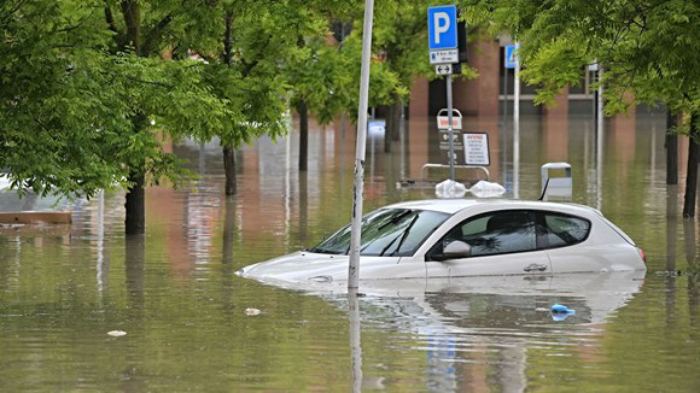Parts of Italy are currently experiencing the most extreme weather conditions in recent memory, with heavy rains causing flooding in Italy’s northern Emilia-Romagna region. As a result, the mayor of Ravenna says his city is now ‘unrecognisable’, while the Emilia-Romagna F1 Grand Prix which was due to take place this weekend has since been cancelled.
With conditions in the region set to continue, we caught up with Peter Wadhams, Emeritus Professor of Ocean Physics at the University of Cambridge, and Richard Washington, Professor of Climate Science at the University of Oxford, from Extreme E’s Scientific Committee to understand more about the extreme weather and its cause.
Extreme E: Can you explain what’s currently happening in Italy?
Professor Peter Wadhams: Italy has been afflicted by an unusually intense burst of rain which has caused widespread flooding, with further rain on the way. One of the effects of the storm has been the cancellation of the Emilia-RomagnaGrand Prix at Imola, but of course there is far more to it than that. Nine people have been killed so far, as 21 rivers have burst their banks and sent masses of water over surrounding land.
Extreme E: What is the cause of the flooding and such extreme weather?
Professor Peter Wadhams: One cause has been the drought which has affected northern Italy since January 2022. Rainfall has been at less than a quarter of the normal level, and this caused rivers to dry up and thus the soil in the riverbed to become dry and cracked. The river Po, Italy’s greatest river, which flows close to where I reside, dried up almost completely. Then the rains came.
May was a time of almost continuous rain, and the dried riverbeds absorbed vast quantities of water, which plugged the base of the rivers such that further rain led to a rapid growth of water level.

The centre of the storm was in the northern Adriatic and the coastline of Emilia Romagna (near Ravenna) where more than 50cm of rain fell in a few hours and 14,000 people have been evacuated. Water level rose by more than a metre in Faenza and Cesena, and the centre of Bologna was flooded. Motorways and railways have been blocked, too.
Extreme E: Due to the climate crisis, is extreme weather such as this likely to appear more frequently?
Professor Peter Wadhams: Events of this nature are becoming increasingly common. They are known as ‘extreme weather events’, but because they are so frequent we ought to be changing the name by now to ‘extreme climate events’. They are related to the breakup of the Jet Stream; this is a strong westerly wind system which separates cold polar air from warmer tropical air, but as these two types of air are now very similar, there is less difference than in the past between the speed of the two flows, so the steady wind streams tend to break up into chaotic motions which allow extremes to happen.
Professor Richard Washington: In spring, the temperature difference between the Sahara and Europe is extreme. The temperatures over the Sahara are stinking hot while snow still lies on the Alps just a short distance to the north. This temperature difference drives the jet stream, with winds of around 200 kmh over northern Italy during the floods. The jet is unstable and goes through periods of weeks when it loops around a lot instead of being a straight, non-loopy west to east wind. In the case of the floods over Italy it was very, very loopy.
The jet creates weather systems and those from a loopy jet are able to hang around in the same place for a lot longer than in the case of a less loopy jet. The rain produced from the weather system made by the loopy jet falls on the same patch of ground. Half the years total rain can fall in a few days and this happened for some places in Italy. The jet stream in the northern hemisphere is becoming much more loopy with climate change, likely because of changing coverage of ice.

Extreme E: Should it be even more alarming that such a climate emergency is happening in a mainland European nation?
Professor Peter Wadhams: We certainly should be, however there is little more we can do about that. Nature takes no notice of the level of economic development and can send these anomalies at any time.
Extreme E: What measures can be put in place to address the risk of these occurrences taking place?
Professor Peter Wadhams: The best we can do is strengthen flood defences so that they can withstand more serious weather impacts than at present. And as weather forecasting advances, we can hope to obtain a few hours more notice of an extreme event arrival. These extreme events are a new phenomenon – the first one occurred in 2005- and the frequency is increasing. We need greater knowledge of what is bearing down on us.
Extreme E Season 3 heads to Sardinia on 8-9 July, co-organised by the Automobile Club d’Italia and Regione Sardegna, where Extreme E’s Scientific Committee will be using the racing to talk about climate issues and solutions facing the islands, from wildfires to droughts, and its effects on biodiversity on land and in the surrounding coastlines.

COMMENTS